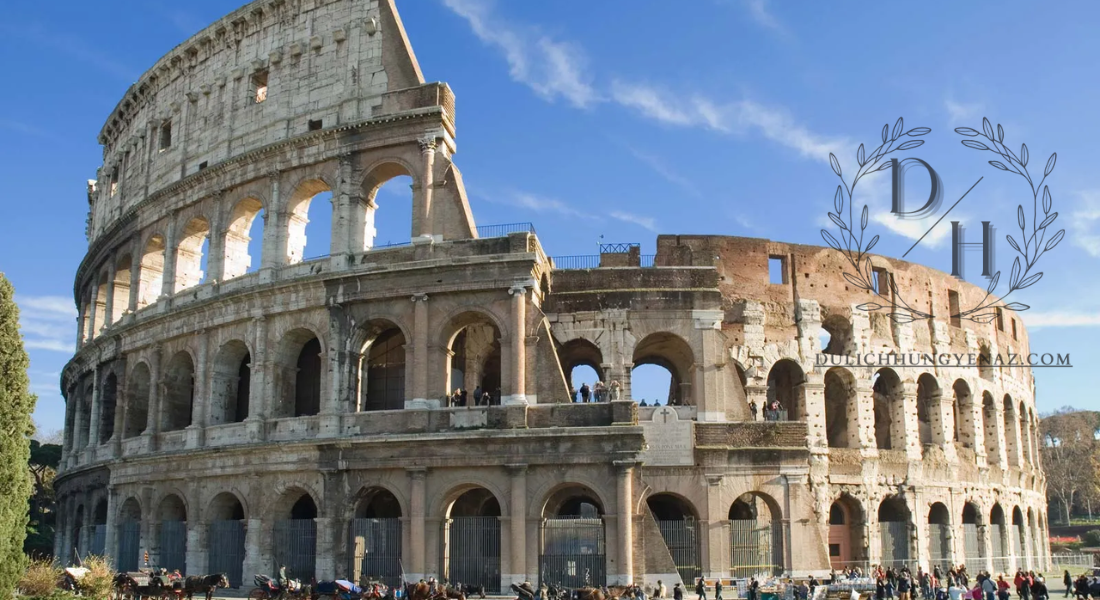Rome’s Colosseum stands as a testament to the grandeur and architectural prowess of ancient Rome. This iconic structure, also known as the Flavian Amphitheatre, is a must-visit landmark for anyone traveling to Rome. Its rich history, impressive scale, and fascinating stories draw millions each year, inviting visitors to step back in time and experience a piece of ancient civilization. Here’s a guide to exploring the Colosseum in Rome’s historic heart, from its historical significance to tips on making the most of your visit.
Key Highlights
- Why the Colosseum is an Iconic Landmark: The historical significance and architectural marvels of the Colosseum.
- Exploring the Colosseum: Key sections and must-see areas within the Colosseum.
- Tips for Visiting the Colosseum: How to ensure a smooth and memorable visit.
- FAQs: Common questions about visiting the Colosseum.
1. Why the Colosseum is an Iconic Landmark
The Colosseum, completed in 80 AD, is one of the largest and most impressive structures from the Roman Empire. Commissioned by Emperor Vespasian and completed under his son Titus, it became a central venue for public spectacles, gladiator battles, animal hunts, and even mock naval battles. Holding up to 50,000 spectators, the Colosseum reflects the Roman Empire’s engineering expertise and love for grand displays. Its oval shape, towering arches, and intricate underground chambers demonstrate both the complexity and scale of ancient Roman architecture.
2. Exploring the Colosseum
The Colosseum has multiple levels, each offering a unique perspective on its history and function. Here’s what to expect as you explore the different sections of this monumental site:
1. The Arena Floor
- Overview: The Colosseum’s arena floor was the stage for gladiatorial contests and dramatic performances.
- Highlights: The floor itself is partially reconstructed, allowing you to imagine the action that took place as gladiators, animals, and performers took center stage.
- Must-See: Look down into the hypogeum, or underground chambers, where animals and gladiators waited before emerging into the arena.
2. The Hypogeum (Underground Chambers)
- Overview: The hypogeum, or underground area, is where animals were caged and gladiators prepared for battle.
- Highlights: A complex system of tunnels and lifts allowed organizers to create surprise entries, adding drama to events.
- Must-See: Take a guided tour of the hypogeum to gain insight into the behind-the-scenes logistics that made the Colosseum’s spectacles possible.
3. The Upper Levels
- Overview: The upper tiers of the Colosseum were reserved for the lower classes, offering a panoramic view of the arena and surrounding city.
- Highlights: These levels provide a breathtaking perspective on both the interior of the Colosseum and the surrounding Roman Forum and Palatine Hill.
- Must-See: Climb to the highest accessible point to get a bird’s-eye view of ancient Rome.
4. The Museum Exhibits
- Overview: Located within the Colosseum, small museum exhibits showcase artifacts, including tools, inscriptions, and statues found at the site.
- Highlights: Exhibits cover various aspects of Roman life, from gladiatorial games to the engineering techniques used in the Colosseum’s construction.
- Must-See: Check out models of the Colosseum as it was in its prime, giving you a glimpse into its original grandeur.
3. Tips for Visiting the Colosseum
To make the most of your visit, follow these practical tips:
1. Book Tickets in Advance
The Colosseum is one of the busiest attractions in the world, so book your tickets ahead of time to avoid long queues. Consider buying a skip-the-line ticket or opting for a guided tour, which often includes priority access.
2. Visit Early or Late
To avoid large crowds, visit early in the morning or late in the afternoon. Early hours provide a quieter atmosphere, while the late afternoon light offers a magical view as the sun sets behind the Colosseum.
3. Choose a Guided Tour
A guided tour is invaluable for understanding the historical and architectural significance of the Colosseum. Many tours also include access to restricted areas, like the hypogeum and upper levels, which aren’t accessible with standard tickets.
4. Wear Comfortable Shoes
Exploring the Colosseum involves walking up stairs and uneven surfaces, so wear comfortable shoes to ensure a smooth experience.
5. Combine with Nearby Attractions
The Colosseum is close to other iconic sites, including the Roman Forum and Palatine Hill. Consider a combination ticket that allows you to explore these areas as well, giving you a comprehensive view of ancient Rome.
4. FAQs
1. How long should I plan for a visit to the Colosseum?
Most visits to the Colosseum take 1-2 hours. If you’re also visiting the Roman Forum and Palatine Hill, plan for an additional 2-3 hours.
2. Can I visit the Colosseum without a guide?
Yes, you can visit the Colosseum without a guide, but guided tours provide deeper insights and often include access to restricted areas.
3. Are there any restrictions on items I can bring inside?
Yes, large bags, backpacks, and suitcases are not allowed inside the Colosseum. Be sure to bring only essentials.
4. When is the best time of year to visit the Colosseum?
The best time to visit is during the spring (April to June) or fall (September to October), when the weather is pleasant and crowds are smaller.
5. Is the Colosseum accessible for visitors with mobility challenges?
The Colosseum has made efforts to increase accessibility, with an elevator available to the second level. However, the uneven terrain may still present challenges.
Conclusion
Visiting the Colosseum is like stepping into a living history book. This iconic landmark, with its towering arches and grand design, offers a window into the past, showcasing the ingenuity and culture of ancient Rome. From the bustling arena floor to the hidden hypogeum, each part of the Colosseum tells a story of a bygone era. With proper planning and a sense of adventure, you can make the most of this unforgettable journey through history in the heart of Rome.






